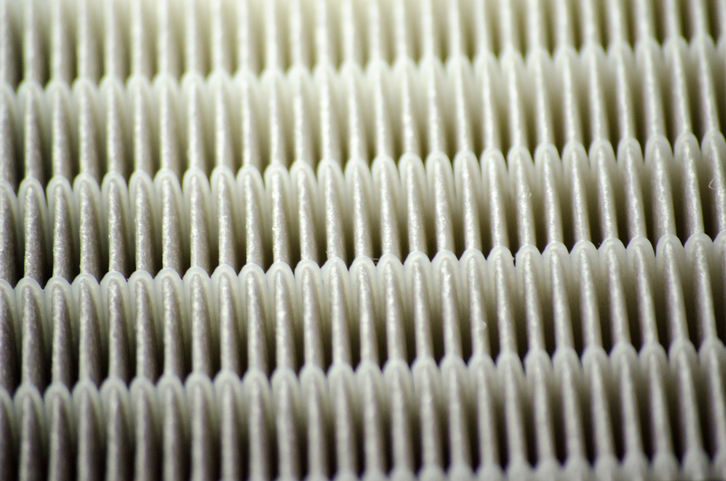Humidity, Filtration, Purification – How to Clean Up Your Indoor Air in 2020

It is no secret the outdoor air on Earth is getting increasingly toxic. We are lucky here in Canada to have some of the cleanest outdoor air of any country… but we aren’t quite so lucky with our indoor air.
The trend toward airtight residential and commercial construction has created very energy-efficient buildings. But we now know that, in solving one problem, the construction industry has unwittingly created another.
Now our homes and workplaces are so airtight they have become toxic air zones. Stale air can’t get out and fresh air can’t get in.
To this end, the U.S. Environmental Protection Agency recently announced that indoor air in North America is up to five times more toxic than outdoor air in most places on the continent.
Is there anything you can do to protect yourself, your family, and your workers? You can definitely take action to clean up your indoor air. Read on to learn what to do.
Why Is Canada’s Indoor Air So Toxic?
According to Breathe: The Lung Association, the average Canadian spends up to 90 percent of their daily time inside.
This is not good news for our lungs. Not only are there greater numbers of toxins in our indoor air, but also they exist at higher concentrations.
In most cases, the specific types of indoor air toxins are the result of personal choice. Most of the indoor toxins creating so many serious health conditions for Canadians today are introduced by us!
Smoking and vaping, use of personal fragrances and care products, use of commercial cleaning products, craft and home renovation projects, pest control poisons, so-called air fresheners, radon gas, carbon monoxide and volatile organic compounds arising from incomplete fossil fuels combustion (like those from stoves and fireplaces) all release chemicals into the indoor air.
The outpouring of so many different chemicals, gaseous, liquid and particulate, into enclosed indoor spaces is making our indoor air toxic.
Health Symptoms Associated With Indoor Air Toxicity
Many people today still do not realize that many of the products they are using for cleaning, air freshening and personal care are actually loaded with toxic chemicals. So often, it takes recurrent health symptoms before you start to put two and two together.
For example, have you ever been sitting in the break room at work when the cleaning staff comes through to mop the floor or wipe the countertops? If your eyes started to water, your throat felt raw or you started to cough, it is likely that you are sensitive to the harsh, chemical-laden cleaning products they were using.
In the same way, handling pesticides, idling your car, lighting a scented candle or using a perfumed air freshener (and similar choices) can release dangerous chemicals into the air.
Here are some of the most common health symptoms that are now linked to indoor air toxicity at home or at work:
-
Respiratory: coughing, runny nose, congestion, watering or dry eyes
-
Skin: rash, irritation, allergic reaction
-
Allergy and asthma symptoms getting worse
-
Dizziness, nausea, vomiting
-
Mental fogginess, trouble concentrating, chronic fatigue
-
Recurrent sinusitis or bronchitis
-
Shortness of breath, trouble breathing, wheezing
-
Mood: irritability, anxiety, depression
-
Systemic: heart and lung damage, cancer
Today's research highlights the link between indoor air toxicity and health complications in highest-risk populations, including unborn babies, pregnant women, the very young and the elderly.
For instance, low birth weight, premature babies, autism, childhood asthma and allergies, delayed childhood development, neurological issues and other health concerns are linked to toxic indoor air.
How to Improve Your Indoor Air Quality At Home or Work
There are four main steps to take to begin cleaning up your indoor air at home or at work. If you commit to taking these steps, don’t be surprised if you, your family and your employees start to feel better right away!
Change your habits
Perhaps the most important step to take is to start paying much closer attention to what you do and which products you use inside your space.
Switching to all-natural cleaners, giving up chemical fragrance or air fresheners in favor of essential oils, taking vaping or smoking outside, installing exhaust vents and range hoods and similar choices will make an immediate impact on the quality of your indoor air.
Ventilate
Because of the airtight construction standards we mentioned here earlier, today’s homes and workplaces literally cannot breathe on their own.
There is no inbuilt mechanism to exhaust stale air or bring in new fresh air. This is why the City of Toronto has mandated that all new construction must include a heat recovery ventilator (HRV).
This appliance does three important things. It ensures a continual influx of fresh air and a continual exhaust of toxic stale air. It balances the humidity. And it lowers energy bills by recycling heat energy.
Filter
There are three main kinds of airborne toxins: particulate, gaseous and liquid. HEPA (high-efficiency particulate air) filters handle the first type of toxin: particulate matter.
HEPA filters can trap particles as small as 1/100th the size of a single human hair and prevent them from entering the air supply and your lungs.
Purify
Ultraviolet air purifiers handle the second two types of toxins: gases and liquids. Ultraviolet light has the ability to change the molecular structure of gases and liquids so they cannot do any damage.
This is especially important with bacteria, fungi and viral matter, which are rendered harmless after exposure to ultraviolet light and cannot make you sick.
All three of these systems can be retrofitted to work with any central (ducted) air delivery system. Portable filters and purifiers also exist.
Get in Touch
Are you ready to clean up your toxic indoor air? We can help!
Give us a call at 613-967-1066 or visit us online.

